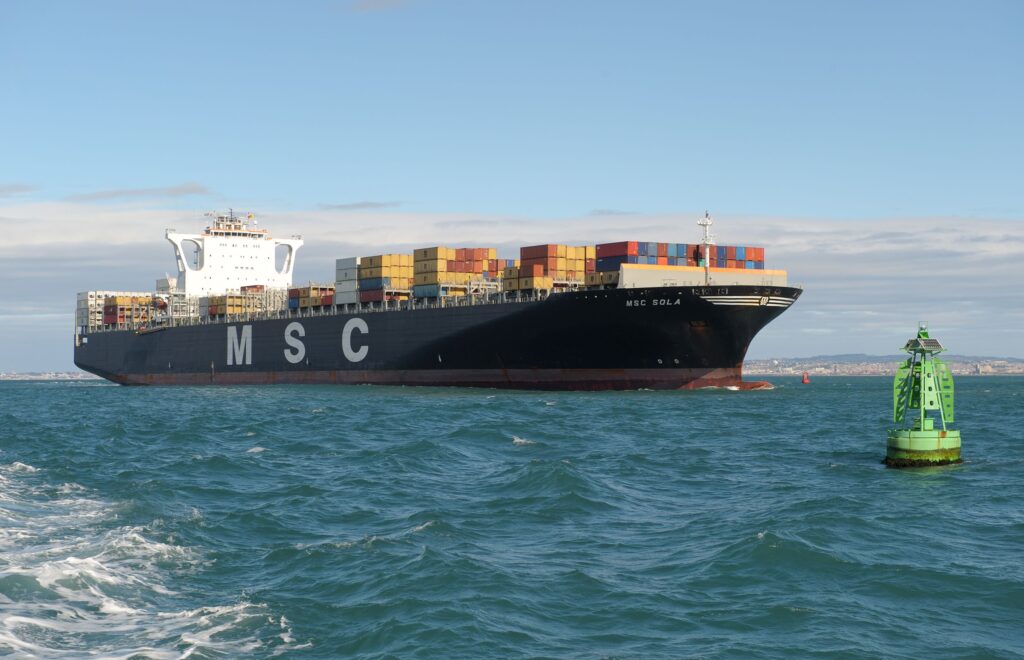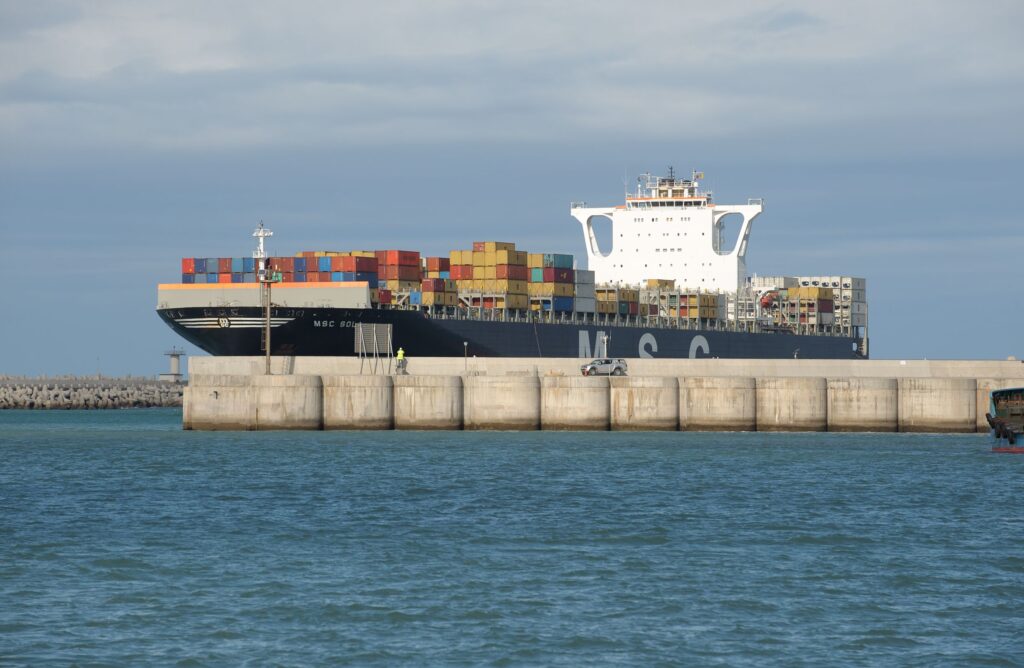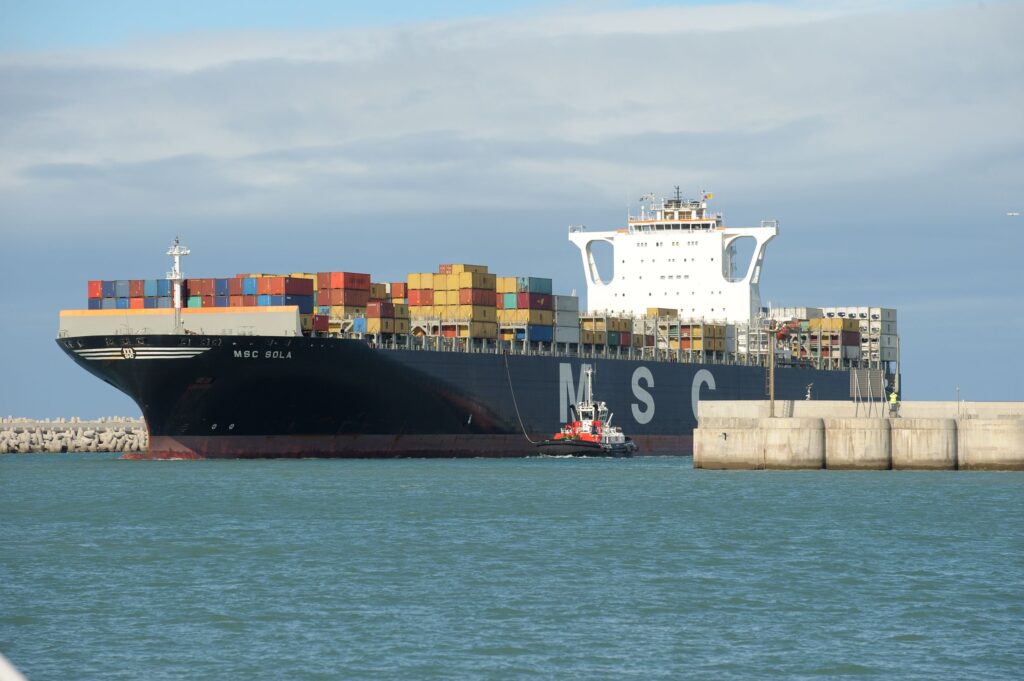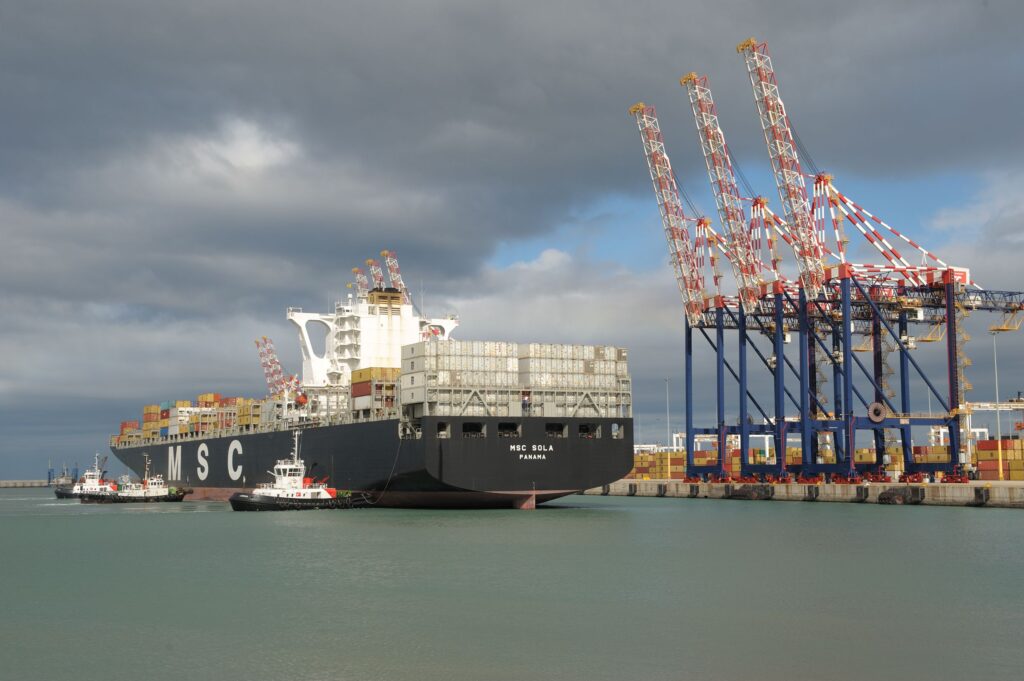Transnet National Ports Authority’s (TNPA) Port of Ngqura customers can count on exceptional piloting services when their vessels are being moved in and out of the port.
It boasts the services of Marine Pilot Ziggy (Siegfried) Duwe (62), who achieved more than 4 000 ship movements in the last 12 years. He is the first pilot with this accomplishment in Algoa Bay, according to company records.
It is this scarce skill of a human being enabling gigantic ships to safely enter ports, exit ports and being manoeuvred inside ports – allowing essential trade of goods across shores to keep the global economy going.

A significant achievement
“I regard this achievement as significant as we don’t have the high volumes of the ports of Durban and Cape Town in the Nelson Mandela Bay ports. My best practice experience has also contributed meaningfully to the young Port of Ngqura, which opened for operations partially in 2009 and fully in 2012,” he says.
“As the port is susceptible to prevailing winds, my seafaring and surveyor experience was used to develop Standard Operating Procedures to address some of these problems.
“I guess the sea is in my veins. I really enjoy piloting – I am grateful for good health and a measure of fitness. You need this, especially if the ship’s elevator is not working you have to climb the equivalent of 13 stories on some ships!”
Ziggy believes that the strengths of his type D personality according to the DISC analysis – being a driver and not easily side-lined – stand him in good stead as a Marine Pilot.
“I am a team player who is clear about my plan.
“The bridge team, tugs, pilot boat and berthing crew all work together to accomplish each job. I enjoy working towards excellence, where I have control.”
Ziggy is excited about the construction of the bulk and liquid bulk berths nearing completion. He believes that it will add a unique dynamic to shipping in the port as it will attract bigger bulk carriers and tankers to our shores.
Piloting challenges
Ziggy elaborated on challenges he faced since 2008 as he moved 10% of the vessels in the Port of PE and 90% in the Port of Ngqura.
“Each movement is unique regarding vessel size and weather conditions. Sometimes there are issues with tugs, such as a line parting, some vessels don’t have English speaking officers and some don’t follow pilot’s instructions – if unchecked this can negatively impact a movement.
“Ngqura is 5°C colder than PE in winter – add rain and an open bridge wing, which dampens piloting. I have moved a number of oil rigs without propulsion early in the history of Ngqura, which were challenging due to their shape and high towers,” Ziggy said.
Changing challenges into highlights
The challenges that Ziggy has overcome, has become the highlights of his career.
““My highlights include sailing two ships in a 68 knot wind and one in a 72 knot wind in the windy city of PE. The latter was breaking away from the quayside and I had to stay on board the vessel for 8 hours before I could disembark,” he said.
“Another highlight was when we had to salvage a ship with engine problems off Mbashe during one of the tug trips from East London about three years ago.
“We eventually had to tow the vessel to East London. I had to manoeuvre a number of ‘dead ships’ with engine problems into the harbour.”
Pilot responsibilities
In a nutshell, Ziggy’s responsibility is to navigate ships safely in and out of the port. He is the master of the harbour tug when it travels to East London and back for dry docking. Ziggy also mentors understudy pilots.
“Port Control, in conjunction with other role players, compile a daily schedule of ship movements. The pilot is notified whenever there is shipping, at least one hour before the movement, to help prepare him,” he described.
“For docking, I will board the pilot boat, which will take me to the vessel approaching the pilot boarding station at Racon Tango sea buoy (2 nautical miles from the outer breakwater). Once the pilot boat comes parallel with the moving ship, I climb aboard using the pilot ladder provided by the vessel.
“The captain of the vessel will do an exchange of information and I will do the same concerning my intentions. I then assume ‘command’ and give instructions regarding the vessel’s engines, bow-thruster and rudder. I communicate with and give instructions to the harbour tugs about and during the movement.
“Likewise with the berthing master who relays instructions regarding the receiving of the vessel’s mooring lines. I will then manoeuvre the vessel until it is safely alongside the designated position.
“I will then hand the vessel back to the captain and return to the office to complete the paperwork. I do the reverse when the vessel has to leave the port. Sometimes we have to move vessels to different berths within the harbour.”
A typical day for Ziggy starts by touching base with Port Control to determine shipping movements before handling emails and correspondence. Before shipping, he checks his Personal Protective Equipment, the anticipated weather and his hand held radio.
He also makes sure that the anticipated move is possible – bearing in mind space, lighting and sufficient berthing crew. He works 12-hour shifts, with 36-hour breaks.
From the Harbour Master
“Ziggy’s customer focus and pride as well as his willingness to go the extra mile – working long hours in an unusual environment and enjoying dealing with challenging situations, have contributed to his success.
“His piloting service is based on professionalism, centred around fulfilling the customers’ needs. Our pilots are true ambassadors for our country as they are the first and last people to see the ships’ crew,” said Captain Thulani Dubeko, Harbour Master of the Port of Ngqura.
The man behind the pilot
Raised in Vereeniging and Middelburg (Mpumalanga) Ziggy obtained a Class I (Master Certificate of Competency) and a Diploma in Theology. After Matric, he joined Safmarine as a deck cadet, working and studying intermittently.
He answered a call to ministry in The Salvation Army and was later a Pastor for the Bikers Church in PE too.
In 2005, he worked as a marine surveyor to supplement his income and in 2007 he joined the Port of PE as a tug master trainee. He completed his open license in 2009 – the year that shipping commenced in the Port of Ngqura. He worked for both ports until the Port of Ngqura received its own tugs.
Ziggy is a keen cyclist who has completed 16 then Argus Cycle tours and a number of others. Due to a lack of time, he now enjoys regular shorter cycling trips.
“Motorcycling is a major part of my ‘other’ life. As Eastern Cape President of the Christian Motorcyclist Association (CMA) I take long rides and participate in local biking events. I am also the Pastor of the Bikers Church Port Elizabeth.”
Ziggy has been married to Jenny for 26 years, who is a teacher at Erica Primary, and they have two daughters. Their oldest daughter obtained a teaching degree and is a teacher in South Korea.
Their youngest daughter is a fourth year student in Veterinary Science at the Onderstepoort campus of the University of Pretoria.
Want to become a Marine Pilot?
Ziggy’s advice to newcomers is straight forward – “When I was at sea many of my colleagues didn’t last long as they didn’t realise the type of dedication required. We work any hour of the day or night and in whatever the weather throws at you.
“People have asked to join me on a tug voyage to East London, only seeing the smoothness of the waters in the harbour. Once out at sea the tug pitches and rolls constantly – 13 hours of this takes its toll. So go out to sea on a yacht or fishing trip in rough seas to see if you can manage.
“If you don’t get on with someone on a vessel during your training period, you can’t walk ashore. Your contract of four months or more has to be completed. There is no short cut of moving quickly through the ranks to be in an office without the riggers of sea life.”





